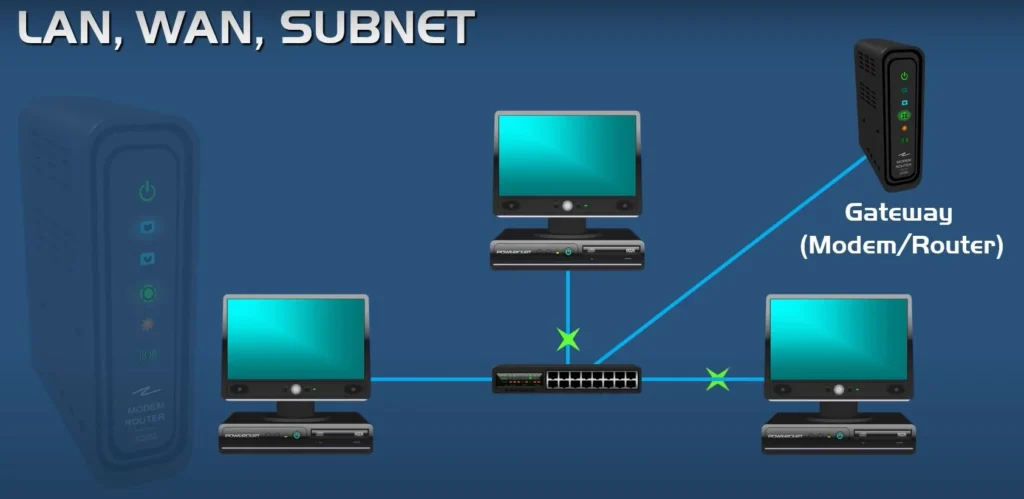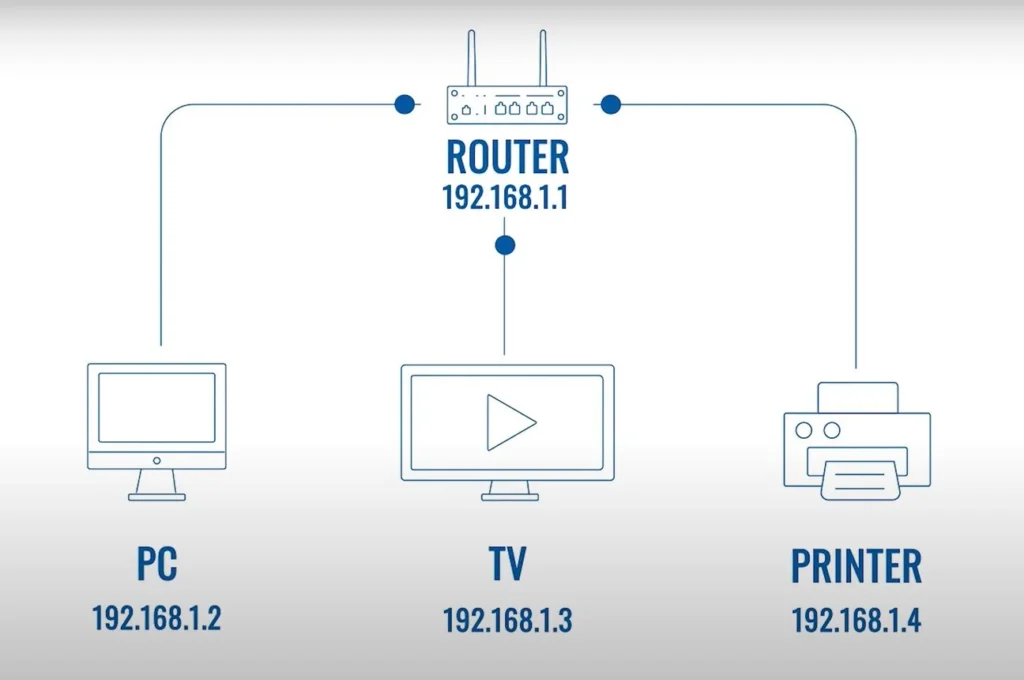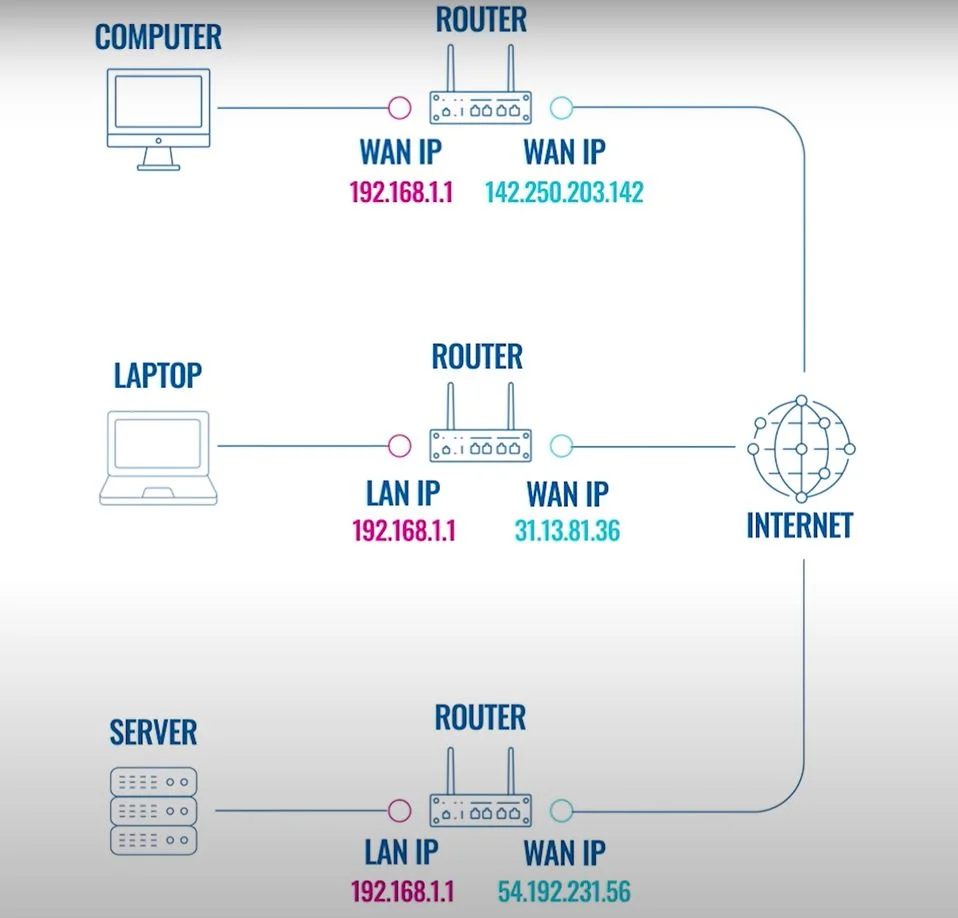In this article we will try to explain what is the difference between two networks – LAN and WAN.
LAN: What is it?

A local area network, or LAN, is a collection of interconnected computers and peripherals in a constrained space, like a house, workplace, lab, or school. Local Area Network, or LAN for short, is a very practical network for exchanging files, printers, games, and other applications. The most basic kind of local area network (LAN) is one that links a person’s office or home computers and printer. LAN are typically used as a kind of transmission medium.
WAN: What is it?
A significant computer network that spans a sizable geographic area is called WAN (Wide Area Network). A WAN network system could be a LAN connected to other LANs through radio waves and phone lines. Usually, it is restricted to a single business or institution. High-end telecom lines are typically used in the construction of wide area networks.
And in this article you can read about a network that is yet to come: LPWAN – The next big thing in the wireless technology from the future
The primary distinction between WAN and LAN
- The rate at which data is transferred is higher in LANs and lower in WANs.
- WAN is a computer network that spans a greater geographic area than LAN, which is a computer network that covers a smaller one, such as a home, office, or collection of buildings.
- WAN speed is lower than LAN speed.
- Greater fault tolerance is provided by LANs, but less fault tolerance is provided by WANs.
- WAN design and maintenance are more complex than LAN design and maintenance.
The primary distinctions between LAN and WAN are as follows:
| WAN | LAN |
| WAN employ technologies like X.25 and Frame Relay to provide long-distance communication. | Tend to employ specialized connectivity technologies like Token and Ethernet. |
| Any network that links metropolitan areas and cross-regional borders through long-distance communication. | A local area network, or LAN, is a computer network that spans a constrained area, like a house, business, or collection of buildings. |
| WAN networks have higher setup costs because they must connect remote areas. | It is not very expensive, but you will need to configure a few more devices on the network. |
| When compared to LAN, WAN data transfer rate is lower. | The data transfer rate over LAN is higher. |
| WANs can be privately or publicly owned. | Ownership of LANs is private. |
| WAN speed is less rapid than LAN speed. | The LAN has a fast speed. |
| WAN propagation delays are longer than LAN propagation delays. | In a LAN, the propagation delay time is brief. |
| Less fault tolerance is provided by it in WAN. | More fault tolerance is offered by it. |
| Both its design and upkeep are challenging. | It is easy to design and maintain. |
Utilizing LAN

These are a few typical uses for LANs:
- Any computer connected to a network can be designated as a server, giving management access to every other computer.
- LAN enables the server to store software that is accessible to all network users.
- It assists in networking every workstation in a building so that local communication occurs between them without requiring Internet access.
- Facilitates the sharing of resources like scanners and printers
- Using the client-server network architecture, software developers can also share development and testing tools over a local area network (LAN) in an office or factory.
Utilizing WAN

The following are a few typical uses for WAN:
- The head of corporate headquarters wishes to share some information with his staff at the regional offices; this can be accomplished by storing the information on the central node.
- A highly secure network is necessary for communication during military operations. In this case, WAN is utilized.
- WAN networks are used by airlines and train reservations.
- Due to their shared use of a network, the university’s dean and lecturer can readily exchange data or resources.
- WAN makes it possible for workstations to connect locally, enabling nodes to communicate with one another without the need for an Internet connection.
- You can share all nodes publicly if you have access to resources like fax machines, printers, scanners, and hard drives.
Benefits of Local Area Networks
The following are LAN’s benefits and advantages:
- Local networks allow computer resources like printers, DVD-ROMs, and hard drives to be shared, which drastically lowers the cost of purchasing hardware.
- Rather than purchasing licenses for every client on the network, you can use the same software across the network.
- The server computer’s single hard drive can hold the data of every network user.
- Data and messages can be transferred between networked computers with ease.
- Managing data in one place gets easier, which improves data security.
- All LAN users can share a single Internet connection thanks to the local network.
Benefits of Wide Area Network
The following are WAN’s benefits and drawbacks:
- WAN makes it possible to cover a wider geographic area, facilitating easy communication between more remote business offices.
- Incorporates gadgets like gaming consoles, laptops, tablets, PCs, and cell phones.
- Wireless transmitters and receivers integrated into client devices enable WLAN connections.
- Connects to multiple workstations to share resources and applications.
- Distribute files and information over a greater area.
The drawbacks of LAN
The following are some benefits and drawbacks of LAN:
- Effective data protection is not guaranteed because each LAN user’s personal data files are accessible to the LAN administrator.
- By sharing computer resources, a LAN network lowers costs. Local area network installation does come at a hefty initial cost, though.
- If the LAN administrator is unable to secure a central data repository, unauthorized users may be able to access confidential company information.
- Local area networks need ongoing management because of problems with hardware malfunctions and software configuration.
The drawbacks of WAN
The following are WAN’s drawbacks and disadvantages:
- WAN network setup is expensive at first.
- WAN network maintenance is challenging since it calls for knowledgeable network administrators and technicians.
- It takes longer to fix problems because there are several wired and wireless technologies being used.
- WAN networks provide less security than other kinds of networks.